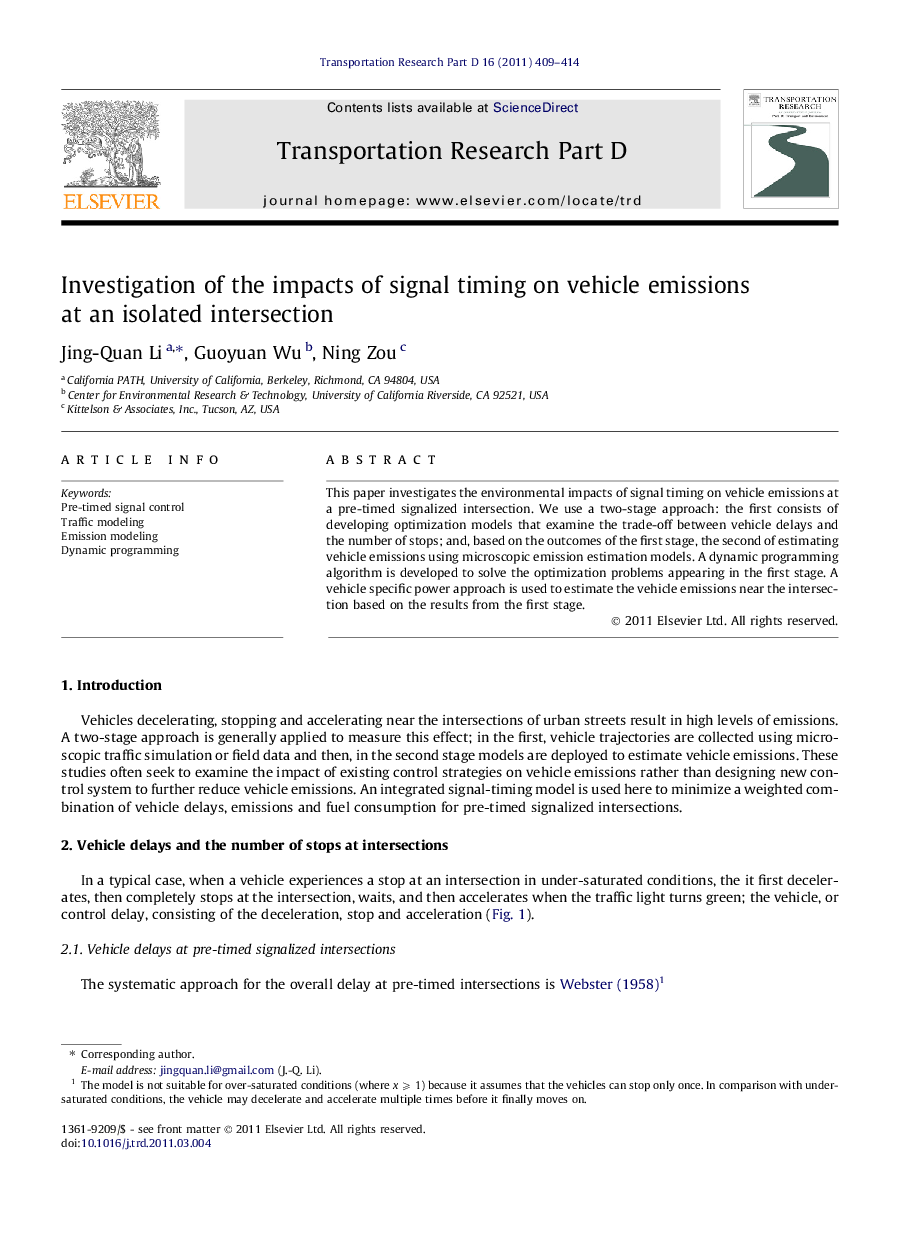| کد مقاله | کد نشریه | سال انتشار | مقاله انگلیسی | نسخه تمام متن |
|---|---|---|---|---|
| 1066047 | 948667 | 2011 | 6 صفحه PDF | دانلود رایگان |

This paper investigates the environmental impacts of signal timing on vehicle emissions at a pre-timed signalized intersection. We use a two-stage approach: the first consists of developing optimization models that examine the trade-off between vehicle delays and the number of stops; and, based on the outcomes of the first stage, the second of estimating vehicle emissions using microscopic emission estimation models. A dynamic programming algorithm is developed to solve the optimization problems appearing in the first stage. A vehicle specific power approach is used to estimate the vehicle emissions near the intersection based on the results from the first stage.
► The total delay increases if the reduction of the number of vehicle stops is imposed in the optimization model.
► For our specific instances, slightly reducing the number of the vehicle stops may result in the reduction of CO at the expense of slightly increasing of CO2 and HC.
► When the reduction of a large number of vehicle stops is imposed in the optimization model, all of four pollutant emissions increase due to significantly increased delay.
Journal: Transportation Research Part D: Transport and Environment - Volume 16, Issue 5, July 2011, Pages 409–414